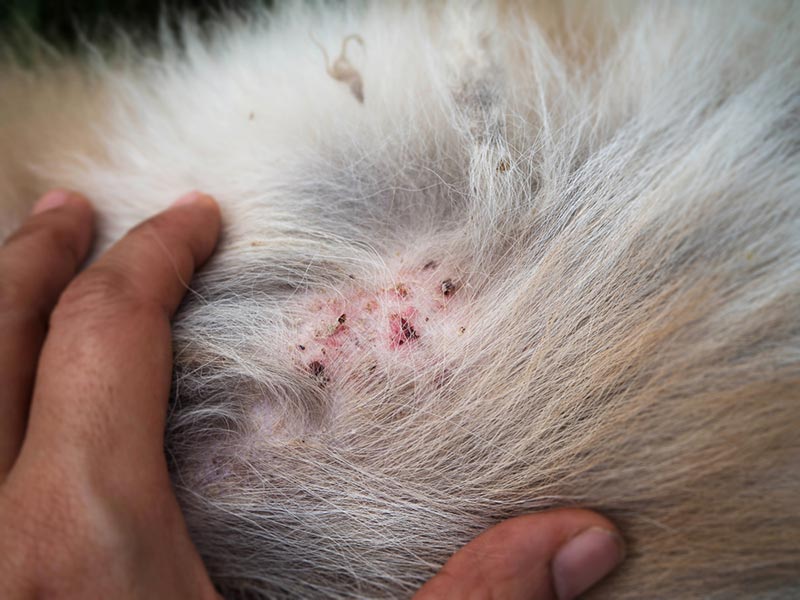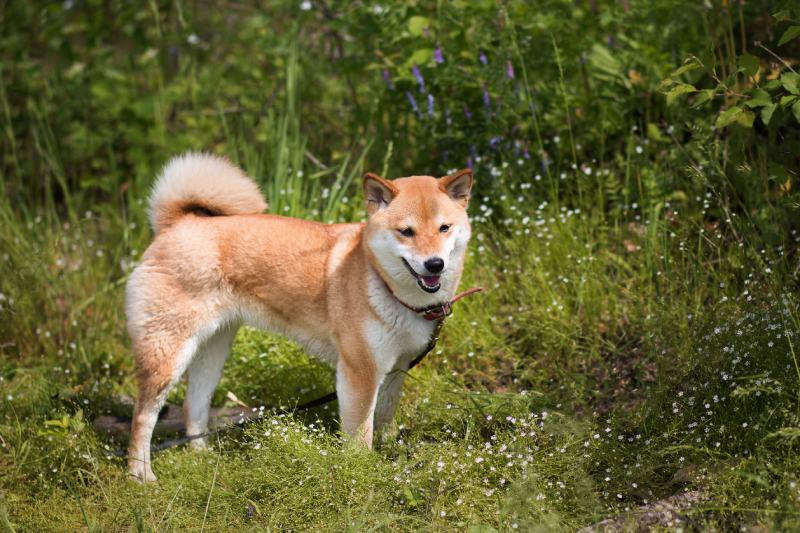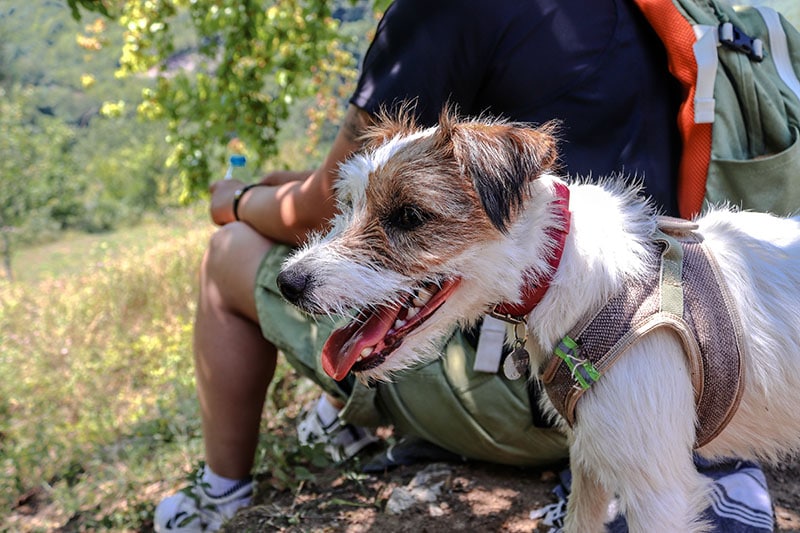Click to Skip Ahead
Seeing your dog habitually scratch themselves might make you suspect they have fleas and upon closer inspection, you might notice the small, dark parasites crawling in your dogs’ fur. It is quite common for dogs to get fleas, which is why many dog owners will regularly treat their dogs during the warmer months.
However, fleas can still be a problem for dogs year-round. Regardless of how clean the environment is and how strict your dog’s hygiene routine is, they can still catch fleas, and this article will explain how.
What Do Fleas Look Like?
Fleas are sometimes confused with ticks on a dog, although both of these parasites have different appearances and behaviors. Fleas are small, adult fleas are only about 1/8th of an inch long. They are a dark reddish-brown colour and can move and jump with speed. The fleas backward-facing spines allow them to securely attach themselves to your dog’s fur, so even a normal bath and frequent brushing won’t get rid of them easily.
Sometimes the fleas themselves won’t be obvious but you will see evidence of ‘flea dirt’ instead. Flea dirt is flea feces produced after fleas have had a blood meal from your dog and looks like little specks of brown dirt. If you collect some of this dirt and place it on a moist white tissue it will stain the tissue red, which can help you tell the difference between flea dirt and ordinary dirt that your dog may have gotten on their fur.
One of the first behaviors you may notice in a dog that has fleas is that they become itchy. Once the flea starts biting your dog, your dog’s response will be to scratch and shake to get rid of the uncomfortable itchy feeling. This itchy reaction can become more severe in dogs who have an allergy to flea saliva..
Furthermore, a dog who is constantly scratching at its skin because of fleas is putting itself at risk of developing skin infections from damaged skin. This makes it important to carefully inspect your dog’s fur if you notice them scratching more than usual or see specs moving around in their fur.

The 5 Ways Dogs Can Get Fleas
When people think of a dog with fleas, we generally assume it to be an uncared for street dog without regular grooming. However, any dog is susceptible to picking up fleas, regardless of how clean and well-maintained their coat is.
Let’s discuss the five ways that dogs can get fleas below:
1. From Other Pets
Dogs don’t only get fleas because of other dogs that can transfer fleas to them, but also from other pets like cats and rabbits.The most common flea found on dogs is actually the cat flea- Ctenocephalides felis. This is because fleas are capable of jumping from one pet to the other and also because your dog can be infested from newly emerged fleas in the home.
So, if you notice that one of your pets has fleas, it is important to treat all in contact pets with a veterinary approved product appropriate for that species.Note- some dog flea products can be highly toxic to cats. It is also important to treat the environment. Always seek advice from your vet about the right products to use.
2. Grass and Sandy Areas
If you live in an area that has a lot of sand and vegetation, your dog might be more likely to pick up fleas. Immature fleas can often be found in grass and other areas that can hop onto your dog as they go past. This will be more common during the warmer summer and spring months rather than wintertime, although it can be a problem year-round.

3. Wildlife
Wild animals like opossums, raccoons, and rodents can carry fleas into your dog’s environment. Dogs can pick up fleas directly if they interact with any wild animals or again from newly emerged fleas in the environment.
4. Traveling
If you take your dog camping or traveling to new areas, they are likely going to pick up fleas from both the wildlife and the environment. Whenever you take your dog camping or travel with them to places where other animals are, it’s a good idea to use flea-preventative methods to lower your dog’s risk of catching fleas.

5. You or Other Visitors
While we don’t want to be the cause of our dogs’ fleas, occasionally we unintentionally transfer fleas or their eggs to our dogs and their environment. This can happen if you have fleas attached to your socks or clothing which can then come into contact with your dog.
This is more common if you are camping or live next to a vegetation-rich area where fleas can attach themselves to your clothes as you are walking through it. Any visitors that come over or you take your dog to visit may have a pet that might transfer fleas to your dog.
How Do You Prevent a Dog From Getting Fleas?
Dealing with a dog who has a flea infestation can be unpleasant, but fortunately, there are several safe and effective ways to prevent your dog from getting them. First, if your other pets such as cats regularly venture outdoors, it is best to regularly treat them for fleas. Even if your dog spends most of their time indoors, an outdoor cat that comes in and out can put them at risk of picking up fleas.
Flea preventatives like topical spot-ons, tablets, and flea collars are available. You should speak to your dog’s veterinarian about the best way to prevent fleas on your dog and other pets.

Conclusion
There are many ways that a dog can pick up fleas, usually from fleas in the environment ( indoors and outdoors) or contact with other infested animals. Fleas can be quite stubborn, so brushing or bathing your dog with a normal shampoo isn’t going to do much to prevent or treat any flea infestations. If you are worried about your dog catching fleas, you should speak with your veterinarian about the right flea preventatives you can use for your dog depending on their health and lifestyle.
Featured Image Credit: MitchyPQ, Shutterstock










